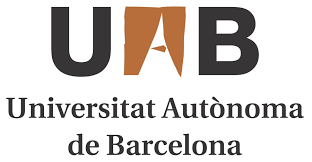
By Leah Temper.
Time is money, the argument goes, so the faster the train moves, the faster the economy grows.
When deciding on whether to go forward on an infrastructure project, the value of travel-time savings is often the principal benefit of a transportation project in a cost-benefit analysis. The assumption being perhaps, that you would be a productive money-producing citizen during the time saved from the shorter trip. For example, the U.S. Department of Transportation recommends valuing travel time-savings at rates of between 50% of the wage rate for local personal travel and 100% of the wage rate for business travel.
Faster is better, is the underlying philosophy behind the billions invested in the high-speed rail axes with lofty ambitions to integrate the European continent with a multi-modal rail network stretching from Lisbon to Kiev and from London to Rome. Many of these trains, under current plans, will travel at speeds between 300 and 400 km an hour. Some clock speeds even higher. But why, a growing group of dissenting voices are asking, does everything need to travel so fast?
The tragic train crash in Santiago de Compostela on Wednesday that has so far led to at least 80 deaths was probably about human error and misjudgment, but as Miguel-Anxo Murado has written in the Guardian, it is set against a backdrop of “a decade of oversized dreams, fast money and fast trains.” It is early to say the cause of the accident and the train was not a high-speed line per se, but it may lead to a questioning in this age of austerity, of the developmentalist attitude that often leads governments to favour “grands projets”, and vanity projects over more cost-effective localized solutions.
The first and longest running anti-high speed protest is that of the No TAV movement, that has been opposing the construction of a tunnel for a high speed line in the Susa Valley in Italy for almost two decades. The movement has protested in the thousands, invaded construction sites, blocked highways, and battled police. There are permanent pickets established and an occupation site n the village of Venaus (presidio) that has been transformed into a permanent garrison where popular assemblies make decisions on tactical strategies that are taken through debate and consensus. One of the key messages of the No- TAV movement is that their territory is not simply a transit corridor from point A to point B on a map. They instead emphasize a re-imagining of the cultural and environmental values of the territory and the related community.
Questioning high speed may seem anathema. Trains are supposed to be green. Yet according to Kris De Decker from Low-Tech Magazine (“a website that refuses to assume that every problem has a high-tech solution”), this only holds when comparing trains to aircrafts and even then, they lose their ecological advantage when speed goes up. This is because the energy consumption of a train increases exponentially with its velocity. The reason is that air resistance increases with the square of the speed. According to a study from Lancaster University, trains lose their environmental advantages compared to planes at a speed of 300 to 400 kilometres an hour. Reduced capacity of the railway line is another consequence of high speed. When velocity increases, so does the braking distance, so trains have to keep more distance.
Citizen disenchantment with the vanity projects of leaders have kicked off waves of protest across the continent: from Bulgaria, where a ski project led to the overthrow of the government, to Turkey, where plans for a shopping mall in Istanbul was the spark for the #occupyGezi movement to France, where activists have occupied a planned airport site near Nantes.
This week, an international alliance “Grand Projets Inutiles Imposé (GPII) meets in Stuttgart, where local opposition to a new train station led to the election of a Green government and has given birth to a new protest culture. The conference aims to “exchange ideas, to provide mutual support and to coordinate the protest and resistance against unnecessary and imposed mega-projects in Europe and elsewhere; to preserve the environmental and social basis of people’s lives; to discuss the causes, background and social context of these mega-projects as well as alternatives to them and visions for society.”
Besides decrying the projects as wasteful and environmentally destructive, as well as motivated by political ambition and fuelled by corruption, the conference participants attack the lack of consultation in pushing through these projects, and the distributive aspects of related costs and benefits. For example, one study on the TAV calculated that at current cost estimates of 5000 euros a cm, each 4 inches of track equals a year of retirement, 3 metres of track a kindergarden, a hospital 500 metres.” At the same time, they point out how lack of suitable investment in local networks is discouraging their use and reducing safety while privatization means the regional and night trains are being reduced in favour of high-speed trains for those who can afford it.
In 2011, in the heat of the Greek Debt crisis, Manolopolous wrote of “An age of mass unemployment co-existing with shiny airports, high speed trains and new highway networks… across swathes of Europe.” It is not surprising after all how some of the most indebted nations in Europe now host the most modern infrastructures on the continent.
Spain’s diminshing ability to pay for these grand projects has not dampened enthusiasm. Spanish Prime Minister Mariano Rajoy intends to invest more than 25 billion euros over the next decade in high speed rail. Yet while Spain’s high-speed AVE trains cost almost €6 billion to build, they only transport about 1% as many passengers a year as the nation’s commuter trains. One AVE line between Toledo and Cuenca saw just 16 people a day using it on average (at a price of 18,000 per day) and was shut earlier this year.
This is one reason why the arguments of movements such as the Asamblea Anti-TAV de Euskal Herria (Anti High Speed Train Assembly of the Basque Country) continue to gain force and credibility. Yet the deeper significance of the discourse in Stuttgart lies in its opposition to an economic model that many no longer feel a part of (if they ever were). With youth unemployment near 50% in Spain and Italy, those without a job don’t have “travel cost time” to lose, and they couldn’t afford the train fare even if they did have one of the “mierda-eurista” jobs on offer. The threat of the No-TAV and the GPII movements is that they are not only questioning high speed, they are questioning the whole model of development itself, turning the accusation of being “anti-modern or anti-technology and progress” on it’s head, and reframing these grand infrastructure projects as part of an obsolete and outdated economic model no longer suited to present environmental and social realities.
The question they ask is not only why are we going so fast, but where are we going to?
As one TAV slogan goes: “He who goes slow, goes far and safe: We don’t want the high speed train.”
References:
2012. Stop That Train! Ideological Conflict and The Tav. Lucie Greyl, Hali Healy, Emanuele Leonardi, Leah Temper. Special Issue “Transport Economics and the Environment” of the Journal “Economics and Policy of Energy and the Environment”.





Great blog! Here’s an interesting service done by Report (RAI), in Italy (only in Italian):
http://www.rai.it/dl/portali/site/puntata/ContentItem-9c10df89-0579-40cf-b9aa-47f0a9294a6e.html
Daniela
Amen to that! Half of Europe on the brink of a civil war, and governments still push for empty high speed trains that destroy what is left of the continent. Incredible.
Spain and Italy are of course egregious examples (my solidarity to the Val di Susa people), but the Netherlands and Belgium recently had their share of high-speed nonsense. The now infamous Fyra project was supposed to supplant the time-tested intercity trains with shiny – and expensive – trains made in Italy.
Not only did the project fail because of technical problems and poor quality, but the mindless bidding process is going to leave the Dutch railways – and the Dutch taxpayer – with a huge hole to fill.
The same happened with the project partner in Belgium, who luckily ordered less trains and got out of the trap earlier on.
And all to supplant affordable, convenient, trusted – but slower – Intercities.
@discwrite: true. as a belgian citizen and happy train user of the intercities that we now have, I can fully agree with your valuable link to the fyra debacle.
Pingback: Why so Fast? | Bill Totten's Weblog
Pingback: A handful of links | I Am Not An Environmentalist
Here in California, we voted for a very expensive high-speed train line between Los Angeles and San Francisco. I voted for it, but now I regret it. I think we should have put the money into making the regular trains more frequent and more convenient.
I looked into taking the AVE train from Barcelona to Madrid last summer, and it was about twice the price of flying. So we flew.
I did take the AVE from Madrid to Granada a few years back and, man, it was nice.